Intermediate species, also known as transitional species or missing links, play a crucial role in understanding the process of evolution. These species serve as a bridge between two distinct groups, providing evidence of the gradual changes that occur over time. They possess characteristics that are intermediate between their ancestral and descendant species, offering valuable insights into the evolutionary transitions that have taken place. Some well-known examples of intermediate species include Archaeopteryx, which exhibits both bird and reptile features, and Tiktaalik, a fish-like creature with limb-like structures. These fascinating creatures provide tangible evidence of the interconnectedness of life on Earth.
Key Takeaways
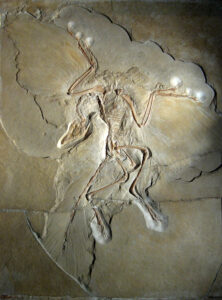
| Intermediate Species | Characteristics |
|---|---|
| Archaeopteryx | Bird-reptile features |
| Tiktaalik | Fish-like creature with limb-like structures |
Key Takeaways
Transitional Fossils: Bridging the Gaps in Evolutionary Biology
Transitional fossils play a crucial role in understanding the evolutionary process and filling in the gaps in our knowledge of species evolution. These fossils provide valuable insights into the intermediate stages of evolution and help us trace the lineage of different species.
One such example of a transitional fossil is Archaeopteryx, which offers a glimpse into the evolutionary transition between reptiles and birds. With its combination of reptilian features like teeth and bird-like characteristics such as feathers and wings, Archaeopteryx provides evidence of the evolutionary link between these two groups.
Tiktaalik and Panderichthys: Fish to Tetrapod Transition
Another fascinating example of transitional fossils is Tiktaalik and Panderichthys, which shed light on the transition from fish to tetrapods. These fossils exhibit characteristics of both fish and early tetrapods, providing a clear picture of the intermediate stages in this evolutionary process. By studying these fossils, scientists have gained valuable insights into the biological adaptations that occurred during this transition.
Homo habilis and Australopithecus: Human Evolutionary Lineage
In the study of human evolution, transitional fossils like Homo habilis and Australopithecus have played a crucial role. These fossils provide evidence of the intermediate stages between our early ancestors and modern humans. By examining these fossils, scientists have been able to understand the evolutionary changes that took place in our lineage, such as the development of bipedalism and increased brain size.
Filling the Gaps: The Importance of Transitional Forms
Transitional fossils are essential in filling the gaps in the fossil record and providing a more comprehensive understanding of the evolutionary process. They offer valuable evidence of the gradual changes that occurred over time and help us piece together the puzzle of species evolution.
By studying these transitional forms, scientists can identify the characteristics that link different groups of organisms. This knowledge allows us to gain insights into the evolutionary transitions that have taken place, whether it be from reptile to mammal or from fish to land-dwelling animals.
The Evolutionary Process: A Continual Journey
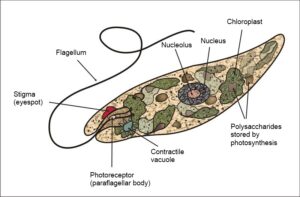
The presence of transitional fossils highlights the continuous nature of the evolutionary process. It demonstrates that species do not appear abruptly but instead undergo gradual changes over time. These fossils provide tangible evidence of the intermediate stages that organisms have passed through during their evolutionary journey.
In conclusion, transitional fossils are invaluable in understanding the complexities of evolution. They provide concrete examples of the intermediate forms that existed between different groups of organisms, offering insights into the evolutionary transitions that have shaped life on Earth. By studying these fossils, scientists can piece together the puzzle of species evolution and gain a deeper understanding of the fascinating process that has led to the diversity of life we see today.
Detailed Examples of Intermediate Species
Archaeopteryx
Archaeopteryx is a fascinating example of an intermediate species that provides valuable insights into the evolutionary transition between reptiles and birds. This ancient bird-like creature lived during the late Jurassic period and possessed both reptilian and avian characteristics. With its feathered wings and reptilian features like teeth and a long tail, Archaeopteryx represents a crucial link in the evolutionary lineage from dinosaurs to modern birds. Its fossil records have provided significant evidence supporting Darwin’s theory of evolution and the concept of transitional forms.
Actinomycetes
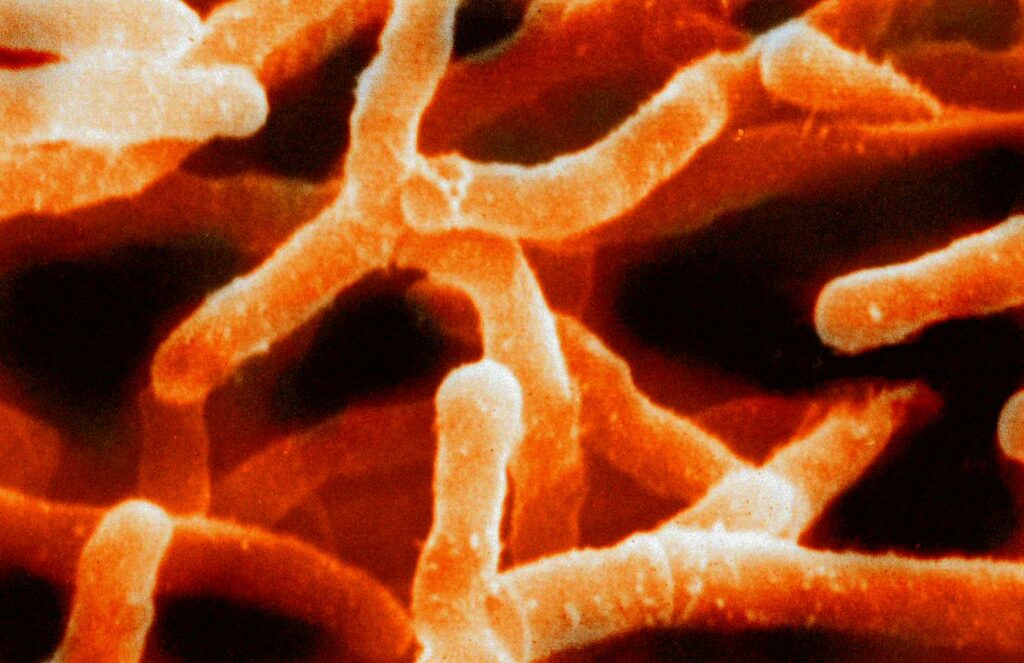
Actinomycetes are a group of bacteria that play a vital role in the soil ecosystem. These microorganisms are considered intermediate species due to their unique characteristics and evolutionary significance. Actinomycetes exhibit traits that bridge the gap between bacteria and fungi, making them important in the study of evolutionary intermediates. They possess features of both groups, such as the ability to produce antibiotics like bacteria and the filamentous growth pattern resembling fungi. This transitional nature of Actinomycetes provides valuable insights into the evolutionary process and the adaptation of different species.
Balanoglossus (hemichordate)
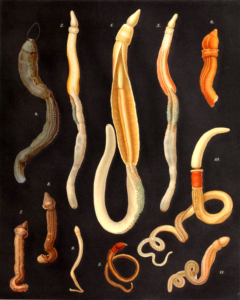
Balanoglossus, also known as hemichordates, are marine organisms that serve as an excellent example of an intermediate species. These creatures exhibit characteristics that bridge the gap between invertebrates and chordates, providing valuable insights into the evolutionary transition from simple organisms to more complex vertebrates. Balanoglossus possesses a structure called a stomochord, which is similar to the notochord found in chordates. This transitional feature helps us understand the evolutionary lineage and the development of more advanced organisms.
Chimaera (Rat or Rabbitfish)
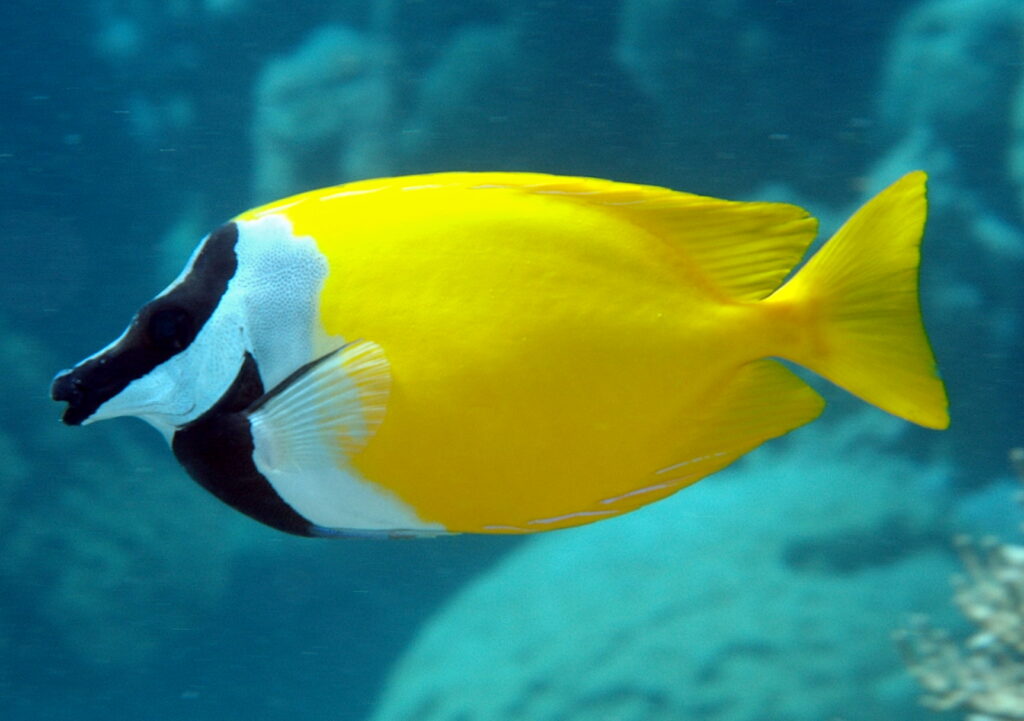
Chimaera, commonly known as Rat or Rabbitfish, is a fascinating example of an intermediate species in the evolutionary transition from fish to mammals. These cartilaginous fish possess unique characteristics that provide evidence of the evolutionary process. Chimaeras have a mix of features found in both fish and mammals, such as a cartilaginous skeleton like fish and a specialized jaw structure resembling mammals. This transitional form offers valuable insights into the changes that occurred during the evolution of mammals from their fish-like ancestors.
Coelacanths
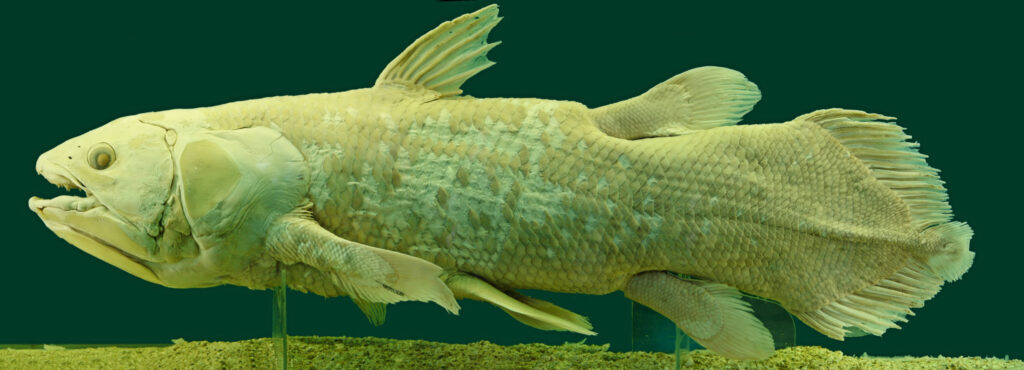
Coelacanths are ancient fish that have been around for millions of years and are often referred to as “living fossils.” These remarkable creatures are considered intermediate species due to their evolutionary significance. Coelacanths possess characteristics that provide insight into the transition from fish to tetrapods, the group that includes amphibians, reptiles, birds, and mammals. They have unique limb-like fins and a primitive lung-like structure, suggesting a stage in the evolutionary process towards land-dwelling organisms. The discovery of living Coelacanths in the deep sea has filled important evolutionary gaps and shed light on the species’ evolution.
Ctenophores
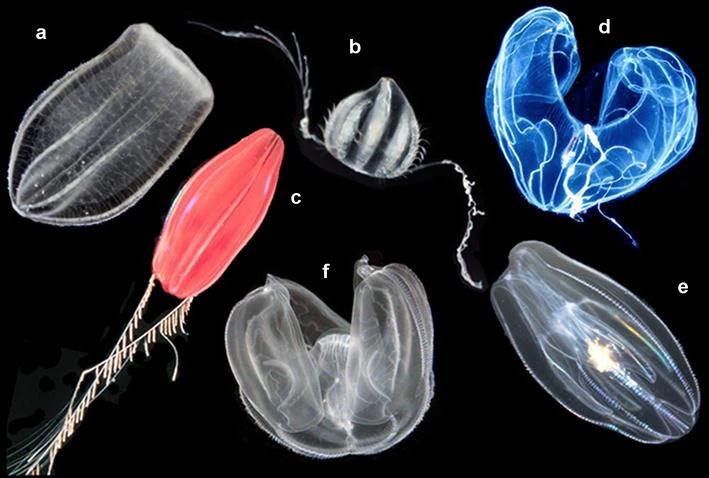
Ctenophores, commonly known as comb jellies, are fascinating marine organisms that represent an intermediate stage in the evolution of animals. These translucent creatures possess characteristics that provide valuable insights into the early stages of animal evolution. Ctenophores exhibit features found in both primitive organisms like sponges and more complex animals like jellyfish. Their unique body structure and specialized cells offer evidence of the evolutionary transition from simple multicellular organisms to more complex animal groups.
Club moss
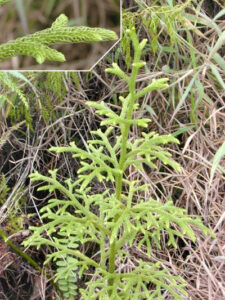
Club moss, also known as Lycopodium, is a group of plants that serve as an excellent example of an intermediate species in the evolutionary transition from ferns to seed plants. These ancient plants possess characteristics that provide insights into the development of vascular tissues and the evolution of plant reproduction. Club mosses have primitive vascular systems and produce spores, similar to ferns, but they also possess some characteristics of seed plants, such as the production of secondary compounds. This transitional nature of club mosses helps us understand the evolutionary process and the changes that occurred during the transition from spore-bearing plants to seed-bearing plants.
Cycas

Cycas, commonly known as cycads, are fascinating plants that represent an intermediate stage in the evolution of seed plants. These ancient plants possess characteristics that provide insights into the evolutionary transition from ferns to gymnosperms, the group that includes conifers and cycads. Cycas plants have primitive reproductive structures, including large cones and seeds, which are characteristic of gymnosperms. However, they also exhibit fern-like features such as pinnate leaves and a lack of secondary growth. This transitional form helps us understand the evolutionary process and the development of different plant groups.
These detailed examples of intermediate species provide valuable insights into the evolutionary process and the transitional forms that have shaped the diversity of life on Earth. By studying these species and their characteristics, scientists can better understand the mechanisms of species evolution and the biological adaptations that have occurred over millions of years. The fossil records and unique traits of these intermediate species offer a glimpse into the fascinating journey of life’s evolution.
Duck-billed platypus
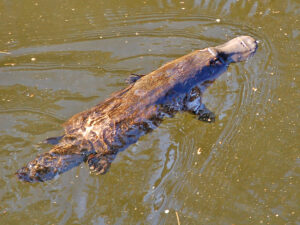
The Duck-billed platypus is a fascinating creature that defies categorization. It is a semi-aquatic mammal native to Australia and Tasmania. With its unique combination of features, it is often referred to as a “living fossil” due to its resemblance to transitional forms in evolutionary biology.
The Duck-billed platypus belongs to the monotreme group, which includes egg-laying mammals. It has a duck-like bill, webbed feet, and a beaver-like tail. This extraordinary creature also possesses venomous spurs on its hind legs, making it one of the few venomous mammals in the world.
Spiny anteater
The Spiny anteater, also known as the echidna, is another example of a fascinating creature that provides insight into the evolutionary process. It is a mammal that lays eggs, making it a monotreme like the Duck-billed platypus.
The Spiny anteater has a unique appearance, covered in spines that serve as protection against predators. It has a long snout and a sticky tongue, which it uses to catch ants and termites, its primary source of food. This remarkable creature is found in Australia and New Guinea.
To better understand the evolutionary transition from reptile to mammal, scientists study transitional forms like the Duck-billed platypus and the Spiny anteater. These species provide valuable evidence of the evolutionary process and the existence of intermediate ancestors.
In the fossil records, species evolution can be traced through the discovery of transitional forms or evolutionary intermediates. For example, the Archaeopteryx is considered a transitional form between reptiles and birds, while Tiktaalik is an intermediate between fish and tetrapods.
By studying these transitional forms, scientists can gain insight into the characteristics and adaptations that facilitated the transition from one group to another. For instance, Panderichthys is an intermediate between fish and tetrapods, providing evidence of the transition from aquatic to terrestrial life.
The Duck-billed platypus and the Spiny anteater are examples of transitional forms that bridge the gap between reptiles and mammals. They possess characteristics of both groups, offering valuable evidence for understanding the evolutionary lineage.
In conclusion, the Duck-billed platypus and the Spiny anteater are remarkable examples of species that provide insight into the process of evolution. Their unique features and characteristics offer valuable evidence of transitional forms and intermediate species, shedding light on the fascinating journey of life on Earth.
The Significance of Intermediate Species
Intermediate species play a crucial role in understanding the process of evolution and the interconnectedness of different species. They provide valuable insights into the transitional forms that existed between major evolutionary stages, filling in the gaps in our knowledge of how species have changed over time.
Species in Transition
Transitional fossils, also known as intermediate species, are the key to understanding the evolutionary process. These fossils provide tangible evidence of the gradual changes that occurred as one species evolved into another. For example, the Archaeopteryx is considered an intermediate species between reptiles and birds, showcasing the transition from scales to feathers. Similarly, Tiktaalik is an intermediate species that bridges the gap between fish and land-dwelling animals, providing insights into the evolution of limbs.
Species Connecting the Dots
By studying intermediate species, scientists can connect the dots between different groups of organisms and trace their evolutionary lineage. For instance, the discovery of Panderichthys, an intermediate species between fish and tetrapods, helps us understand the transition from aquatic to terrestrial life. These intermediate ancestors provide valuable clues about the characteristics and adaptations that allowed species to thrive in changing environments.
Supporting Evidence for Evolution Theories
The existence of intermediate species serves as strong evidence for Darwin’s theory of evolution. These transitional forms demonstrate the gradual changes that occur over time, supporting the idea that species evolve through a process of natural selection. The fossil records of intermediate species provide a wealth of information about the diversity of life and the mechanisms driving species evolution.
Understanding the Interconnectedness of Species
Studying intermediate species allows us to understand the intricate web of relationships between different organisms. By examining the characteristics and traits of these transitional forms, scientists can gain insights into how species are connected and how they have adapted to their environments. This understanding of interconnectedness is crucial for unraveling the complex dynamics of ecosystems and the impact of environmental changes on species survival.
Contributions to Scientific Research and Knowledge
The study of intermediate species contributes significantly to scientific research and knowledge. By examining these transitional forms, scientists can gain a deeper understanding of the evolutionary process and the mechanisms driving species change. This knowledge has practical applications in fields such as medicine, agriculture, and conservation, where understanding the evolutionary history of species can inform strategies for disease prevention, crop improvement, and biodiversity conservation.
In conclusion, intermediate species play a vital role in our understanding of evolution. They provide tangible evidence of the transitional forms that existed between major evolutionary stages, filling in the gaps in our knowledge and shedding light on the interconnectedness of different species. By studying these intermediate species, scientists can gain valuable insights into the evolutionary process and contribute to our broader scientific understanding.
Frequently Asked Questions
What does intermediate species mean?
An intermediate species, also known as an evolutionary intermediate, refers to a species that exhibits characteristics that are intermediate or transitional between two different species. These species play a crucial role in understanding the process of evolution and the concept of species transition.
Which species is an intermediate?
The identification of an intermediate species depends on the context of the study and the specific evolutionary lineage being examined. Transitional forms can be found in various groups of organisms, including plants, reptiles, fish, and mammals. These species possess characteristics that provide insight into the evolutionary process and help us understand the changes that occur during species transition.
Can you provide examples of intermediate species?
Certainly! There are several well-known examples of intermediate species that have been discovered through the examination of fossil records. Let’s take a look at a few:
-
Archaeopteryx: This remarkable fossil represents an intermediate stage between reptiles and birds. It possesses both reptilian features, such as teeth and a long tail, and avian characteristics, including feathers and wings.
-
Tiktaalik: This fossilized fish is considered an intermediate species between fish and tetrapods (four-limbed vertebrates). Tiktaalik had fish-like features such as scales and gills, but it also possessed limb-like fins, suggesting a transition towards land-dwelling organisms.
-
Panderichthys: Another fascinating example is Panderichthys, an extinct fish that is believed to be an intermediate between fish and tetrapods. It had characteristics of both fish and early tetrapods, providing valuable insights into the evolutionary transition from water to land.
What are some examples of species in transition?
The study of transitional forms provides us with a deeper understanding of the evolutionary process. Here are a few examples of species in transition:
-
Homo habilis: This early human ancestor is considered an intermediate species between Australopithecus and Homo erectus. It exhibits a mix of both ape-like and human-like characteristics, representing an important stage in human evolution.
-
Plant transitional forms: Plants also undergo evolutionary transitions, and there are numerous examples of intermediate species in the plant kingdom. These species possess characteristics that bridge the gap between different plant groups, providing evidence of evolutionary intermediates.
Are there any examples of inter-species competition?
Yes, inter-species competition is a common phenomenon in nature. It occurs when different species compete for the same resources, such as food, territory, or mates. This competition can drive evolutionary changes and lead to the development of unique adaptations in competing species. Examples of inter-species competition can be observed in various ecosystems, such as predators competing for prey or plants competing for sunlight and nutrients.
In conclusion, the concept of intermediate species plays a crucial role in evolutionary biology. By studying transitional forms and examining fossil records, we gain valuable insights into the evolutionary process and the changes that occur during species transition. These examples of intermediate species provide evidence of the gradual nature of evolution and the existence of transitional forms throughout different groups of organisms.
Conclusion
In conclusion, intermediate species play a crucial role in the process of evolution. They serve as a bridge between ancestral species and their descendants, showcasing the gradual changes that occur over time. Examples of intermediate species can be found in various branches of biology, such as the fossil record, where species like Archaeopteryx demonstrate the transition from dinosaurs to birds. Other examples include Tiktaalik, which showcases the transition from fish to tetrapods, and Ambulocetus, which represents the intermediate stage between land mammals and whales. These examples highlight the importance of intermediate species in understanding the complex web of life and the continuous process of evolution.
How Do Obligate Aerobes Relate to Intermediate Species Examples?
Obligate aerobes pertain to organisms that require oxygen for survival and growth. Understanding their relationship to intermediate species examples is essential. Intermediate species exhibit characteristics in between two distinct species, serving as a bridge in evolutionary processes. By studying detailed facts about obligate aerobes, we can gain insights into the transition and adaptation of organisms throughout different stages of evolution.
References
In the field of evolutionary biology, the study of transitional fossils plays a crucial role in understanding the process of species evolution. These fossils provide valuable insights into the intermediate stages of evolution and help bridge the gaps in our understanding of how different species have changed over time.
Transitional fossils, also known as evolutionary intermediates, are examples of species that exhibit characteristics of both their ancestral and descendant groups. They provide tangible evidence of the evolutionary transition from one form to another, offering a glimpse into the gradual changes that occur over generations.
One well-known example of a transitional fossil is Archaeopteryx, which is considered an intermediate between reptiles and birds. This prehistoric species possessed both reptilian features, such as teeth and a long tail, and avian characteristics, including feathers and wings. Its discovery provided significant evidence for the evolutionary link between dinosaurs and modern birds.
Another notable transitional fossil is Tiktaalik, an intermediate between fish and tetrapods. This ancient creature had fish-like characteristics, such as scales and fins, but also possessed limb-like structures with wrists and elbows, making it an important example of the transition from aquatic to terrestrial life.
Panderichthys is yet another example of a transitional fossil that helps us understand the evolutionary lineage of fish. This species exhibits both fish-like and tetrapod-like characteristics, providing evidence for the transition from fish to amphibians.
The fossil record is filled with numerous examples of transitional forms that showcase the gradual changes and adaptations that occur during the process of evolution. These fossils help scientists piece together the puzzle of how different species have evolved over time.
Studying transitional fossils not only provides insights into the evolutionary process but also sheds light on the mechanisms of biological adaptation. By examining the characteristics of these intermediate species, scientists can gain a better understanding of how certain traits develop and change over generations.
In conclusion, transitional fossils are invaluable in our quest to understand the intricacies of evolution. They provide tangible evidence of the gradual changes that occur between species and offer insights into the evolutionary transitions that have shaped life on Earth. By studying these fossils, scientists can gain a deeper understanding of the diverse forms of life that have existed throughout history.
What are some examples of specialist species and environments?
Examples of specialist species and environments can be found through careful observation of various ecosystems. Specialist species are those that have evolved to thrive in specific types of habitats or are highly adapted to utilize specific resources. For instance, the Examples of specialist species and environments. may include organisms such as the koala, which has evolved to live exclusively on eucalyptus leaves, and the polar bear, specialized for surviving in Arctic environments. These species have specific requirements and adaptations that allow them to excel in their respective habitats.
Frequently Asked Questions
What are Examples of Intermediate Species in Evolutionary Biology?
Intermediate species, often referred to as transitional fossils, are species that show the evolutionary transition from one species to another. Examples include the Archaeopteryx, which shows the transition from dinosaurs to birds, and Tiktaalik, which shows the transition from fish to land-dwelling tetrapods.
What is the Significance of Intermediate Species in Darwin’s Theory?
The significance of intermediate species in Darwin’s theory of evolution is that they provide evidence for gradual evolutionary change. These species fill in the “missing link” gaps in the fossil record, demonstrating how species have evolved and adapted over time.
How Frequently Do We Discover New Intermediate Species?
The discovery of new intermediate species is not a daily occurrence, but it happens more often than one might think. As fossil hunting techniques improve and new areas are explored, scientists frequently uncover new transitional fossils that further our understanding of species evolution.
What are Some Questions Related to the Anteater Significance in Evolutionary Biology?
Some questions related to the anteater‘s significance in evolutionary biology might include: How did the anteater evolve its unique feeding mechanisms? What intermediate species can we identify in the anteater‘s evolutionary lineage? How does the anteater fit into the larger picture of mammalian evolution?
What are Some Takeaways Examples from the Study of Transitional Fossils?
The study of transitional fossils like Archaeopteryx and Tiktaalik provides key insights into the process of evolution. For example, these fossils demonstrate that significant biological adaptation can occur over time, leading to new species. They also help to fill in evolutionary gaps in our understanding of life’s history.
What are Examples of Intermediate Species in the Fossil Records?
Examples of intermediate species in the fossil records include the Panderichthys, which shows the transition from water to land-dwelling creatures, and Homo habilis, an early human ancestor that shows the transition from Australopithecus to the genus Homo.
What is the Anteater Significance in the Study of Species Evolution?
The anteater is significant in the study of species evolution due to its unique adaptations, such as its long snout and tongue for feeding on ants and termites. These adaptations suggest a long evolutionary process driven by the anteater‘s specific dietary needs.
What is the Significance of Intermediate Species in Filling Evolutionary Gaps?
Intermediate species play a crucial role in filling evolutionary gaps. They provide evidence for the gradual process of evolution, showing how species have changed and adapted over time. This helps to complete our understanding of the evolutionary lineage of different species.
Do Intermediate Species Frequently Appear in the Fossil Record?
Yes, intermediate species frequently appear in the fossil record. However, the discovery and identification of these species can be challenging due to the incomplete nature of the fossil record. Despite this, many transitional forms have been identified, providing valuable insights into the process of evolution.
What are Some Questions Related to the Significance of Intermediate Species in Evolutionary Biology?
Some questions related to the significance of intermediate species in evolutionary biology might include: How do intermediate species support the theory of evolution? What can we learn from studying transitional fossils? How do these species help to fill in the gaps in our understanding of the evolutionary process?
Also Read:
- Fungi parasites examples
- Commensal examples
- Insect examples
- How are traits made
- Is endocytosis pinocytosis
- Are protists aquatic
- Are bacteria decomposers
- Ecosyetm examples
- Cytoplasm in red blood cell
- Plant chromosomes structure

Hello, my name is Kriti Singh from Agra. I have completed a post-graduation degree in Biotechnology and a B.Ed. degree. Biology is my favorite subject since childhood and I never felt tired or bored with this particular subject. As I have an inquisitive personality, always been curious and fascinated to know more about life and nature.
Let’s connect through LinkedIn: